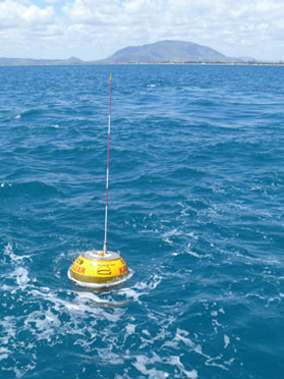Frequently asked questions

What was Queensland’s biggest recorded wave?
The biggest wave recorded in Queensland waters was a 16.75m wave, recorded by the Brisbane wave monitoring buoy moored in 80m of water off North Stradbroke Island on 4 March 2006.
At the time, the Bureau of Meteorology had issued top priority severe weather warnings for coastal communities between K'gari (formerly Fraser Island) and Coolangatta, in response to a low pressure weather system located 135km east-northeast of Cape Moreton.
What is the biggest recorded ocean wave (not a tsunami)?
One of the biggest waves ever encountered was recorded by an officer aboard the United States navy tanker USS Ramapo on 7 February 1933, while on a voyage from Manila to San Diego. This wave was estimated to be 33.5m high.
What is a wave monitoring buoy?
Wave monitoring buoys used by the Queensland Government as part of its wave monitoring network are also known as Waverider buoys. Waverider buoys are manufactured by Datawell of the Netherlands.
How are waves measured via GPS?
The global positioning system (GPS) receiver inside a wave monitoring buoy is similar to the technology used in car navigation systems, with some additional smart processing capabilities.
A wave monitoring buoys GPS receives signals from several satellites orbiting the earth and uses these signals to obtain an absolute position on the earth’s surface.
Once a wave monitoring buoy has found its initial GPS position, it can then measure relative (local) movement using the GPS Doppler principle.
I don’t understand the jargon. What is Hsig?
Please see our Glossary.
Found a lost wave monitoring buoy—what should you do?
As wave monitoring buoys are regularly transmitting data, they are rarely lost and should be left alone.
However, occasionally a wave monitoring buoy becomes detached from its mooring and may be lost.
If you see a wave monitoring buoy and think it may be lost:
- Do not try to recover the wave monitoring buoy.
- Contact the Queensland Government Hydraulics Laboratory on (07) 3869 9500 or coastal.sciences@des.qld.gov.au, or the local Harbour Master, and advise the date and time you saw the wave monitoring buoy, as well as its approximate location.


